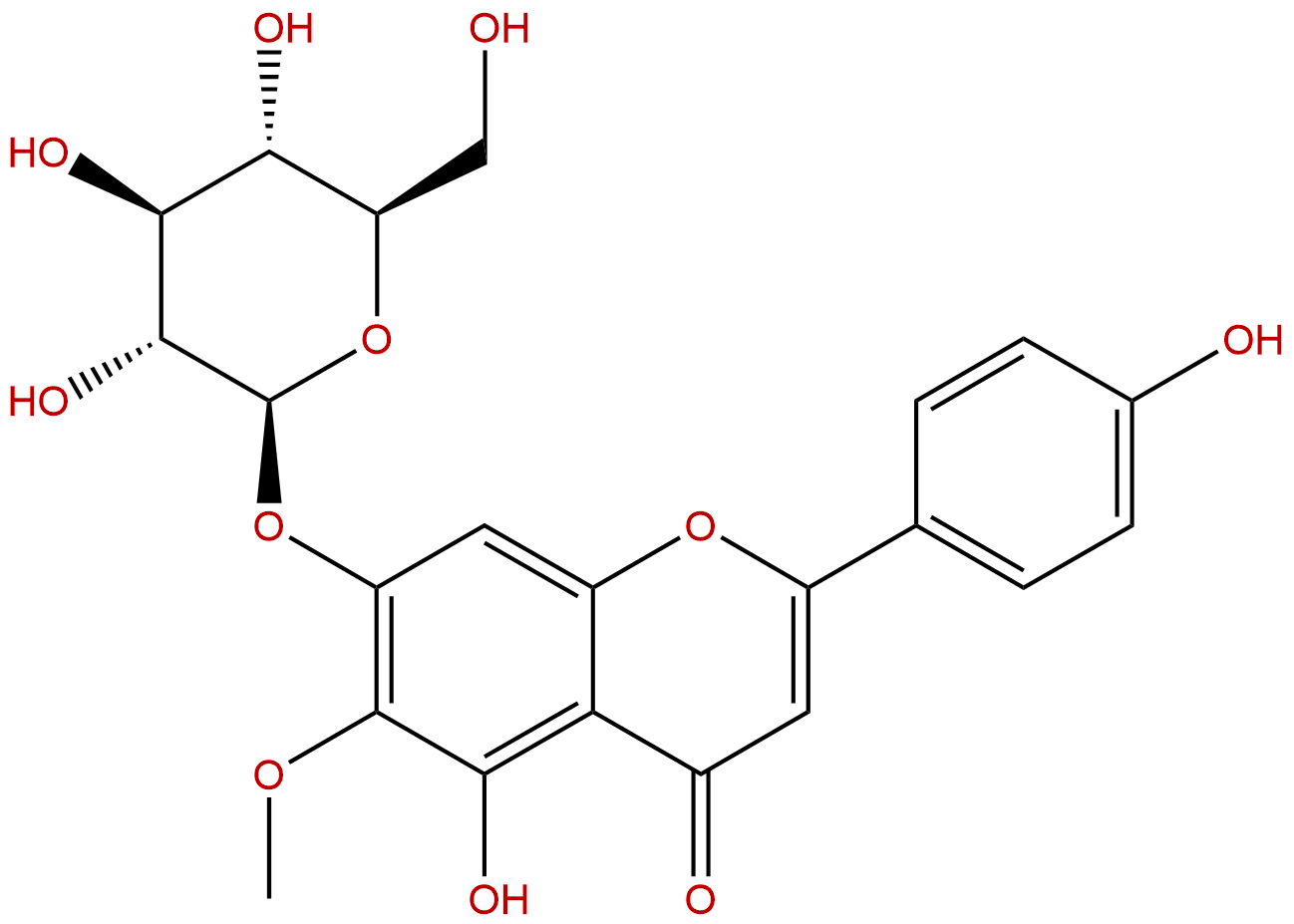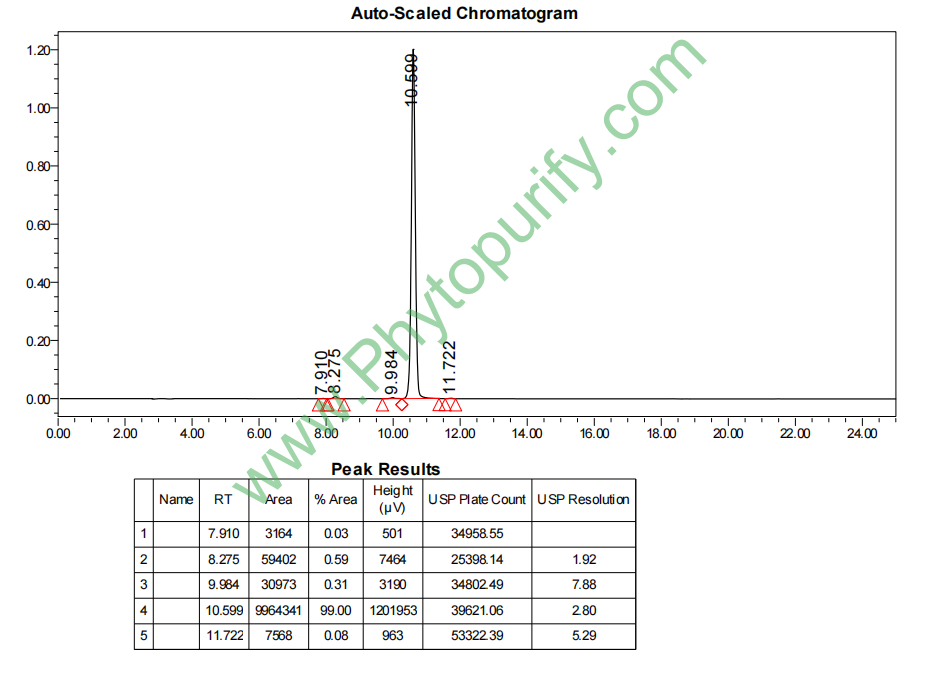
HomoplantagininCAS No.:17680-84-1
|
||||||||||
 |
|
|
||||||||

| Catalogue No.: | BP0734 |
| Formula: | C22H22O11 |
| Mol Weight: | 462.407 |
Product name: Homoplantaginin
Synonym name: Hispiduloside
Catalogue No.: BP0734
Cas No.: 17680-84-1
Formula: C22H22O11
Mol Weight: 462.407
Botanical Source: Salvia plebeia R. Br.
Physical Description:
Type of Compound: Flavonoids
Purity: 95%~99%
Analysis Method: HPLC-DAD or/and HPLC-ELSD
Identification Method: Mass, NMR
Packing: Brown vial or HDPE plastic bottle
Storage: Store in a well closed container, protected from air and light. Put into refrigerate or freeze for long term storage.
Whenever possible, you should prepare and use solutions on the same day. However, if you need to make up stock solutions in advance, we recommend that you store the solution as aliquots in tightly sealed vials at -20℃. Generally, these will be useable for up to two weeks.
The product could be supplied from milligrams to grams
Inquire for bulk scale.
Description:
Homoplantaginin shows anti-inflammatory and antioxidant properties, it also has a protective and therapeutic effect on hepatocyte injury and shows potent inhibitory activities against influenza. Homoplantaginin may be used for the prevention and treatment of endothelial dysfunction associated with insulin resistance, it ameliorates endothelial insulin resistance by inhibiting inflammation and modulating cell signalling via the IKKβ/IRS-1/pAkt/peNOS pathway.
References:
Food Chem Toxicol. 2009 Jul;47(7):1710-5.
Protective effects of Salvia plebeia compound homoplantaginin on hepatocyte injury.
Salvia plebeia R. Br is a traditional Chinese herb which has been considered as an inflammatory mediator used for treatment of many infectious diseases including hepatitis. Previously, the compound Homoplantaginin was isolated in our group.
METHODS AND RESULTS:
Hence, we evaluated the protective effects of Homoplantaginin on hepatocyte injury. Homoplantaginin displayed an antioxidant property in a cell-free system and showed IC(50) of reduction level of DPPH radical at 0.35 microg/ml. In human hepatocyte HL-7702 cells exposed to H(2)O(2), the addition of 0.1-100 microg/ml of Homoplantaginin, which did not have a toxic effect on cell viability, significantly reduced lactate dehydrogenase (LDH) leakage, and increased glutathione (GSH), glutathione peroxidase (GSH-Px) and superoxide dismutase (SOD) in supernatant. In vivo assay, we employed the model of Bacillus Calmette-Guérin (BCG)/lipopolysaccharide (LPS)-induced hepatic injury mice to evaluate efficacy of Homoplantaginin. Homoplantaginin (25-100mg/kg) significantly reduced the increase in serum alanine aminotranseferase (ALT) and aspartate aminotransferase (AST), decreased the levels of tumor necrosis factor-alpha (TNF-alpha) and interleukin-1 (IL-1). The same treatment also reduced the content of thiobarbituric acid-reactive substances (TBARS), elevated the levels of GSH, GSH-Px and SOD in hepatic homogenate. The histopathological analysis showed that the grade of liver injury was ameliorated with reduction of inflammatory cells and necrosis of liver cells in Homoplantaginin treatment mice.
CONCLUSIONS:
These results suggest that Homoplantaginin has a protective and therapeutic effect on hepatocyte injury, which might be associated with its antioxidant properties.
HPLC of Homoplantaginin
